Green Campus Initiatives
The environment in and around the college campus plays an important part in maintaining a healthy atmosphere in nurturing talents. Trees are the major source of the oxygen we breathe, and receiver of the carbon dioxide we exhale. The sustainability of an ecosystem depends on the number of plants and trees in and around the surroundings. The open space in the college is used for gardening and maintain a botanical garden, herbal garden, Leisure space, large open garden, oxygen park etc. Ultimately the campus is maintaining natural equilibrium with trees, birds and water bodies along with human interactions.
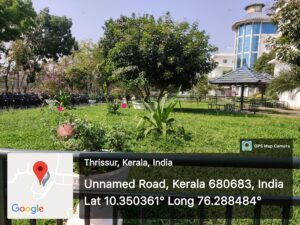

Scientific studies are proved that the nature can able to cure any diseases and this will reduce the stress among students during theirs studies and also increase the compassion among them and to nature. Ultimately the campus is maintaining natural equilibrium trees, birds and water bodies with human beings. Gardens and landscape are an aesthetic delight and it promotes attentiveness of students. Persons exposed to plants have higher level of positive feelings (pleasant, calm) as opposed to negative feelings (anger, fear).
SUSTAINABLE CONSTRUCTION OF BUILDINGS
Energy consuming devices installed to achieve the comfort levels for the occupants of the building gives rise to heat generation which adversely affects the environment within the building and in the surrounding. Buildings are thus the major pollutants that affect the urban air quality and contribute to climate change. Buildings are the major consumers of energy during their construction,
operation and maintenance.

Sahrdaya College of Advanced studies has developed an ecological design in their buildings and adopted minimum negative impact on ecosystem. Their approach to the constructional activities consciously is to conserve energy and ecology and avoid the adverse effects of ecological damage. Sahrdaya College of Advanced studies management constructed the building to optimum utilisation of land and classrooms and with abundant light and natural ventilation. Maximum day light ingression and natural ventilation increases the indoor air quality and avoid the sick building syndrome. The whole facility and buildings are designed to maximum and optimum utilisation of land without affecting the nature.
USE OF PLASTIC IS BANNED WITHIN THE CAMPUS
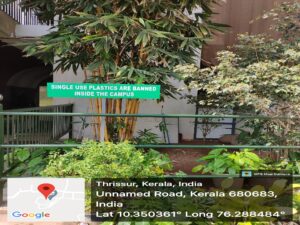
HERBAL GARDEN
The literal meaning of Ayurveda is “science of life,” because ancient Indian system of health care focused on views of man and his illness. It has been pointed out that the positive health means metabolically well-balanced human beings. Ayurveda is also called the “science of longevity” because it offers a complete system to live a long healthy life. It is an interactive system that is user-friendly and educational. It teaches the patient to become responsible and self-empowered. It is a system for empowerment, a system of freedom, and long life. A significant part of knowledge and tradition is currently being eroded due to modernization, acculturation and availability of alternatives. Therefore, it is urgent to inculcate young minds to realize the fascinating knowledge and tradition associated with these resources, and help them understand the immense potentials the Kerala medicinal plants possess for the future. The “Promoting Herbal Gardens in Schools and colleges” has been a fun‐filled learning activity for the students where they got the opportunity to learn about the medicinal plants by actually planting the medicinal herbs and watching them grow in their gardens, and by exploring information about them from various sources.
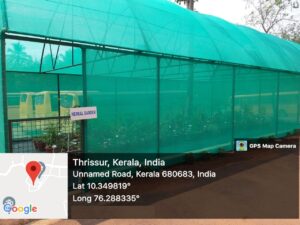
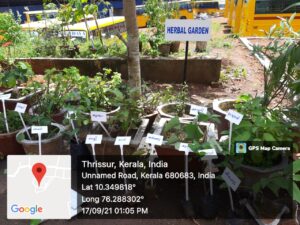
HERBAL PLANTS IN SCAS
1 Yasank
2 Aaduthinnapalai
3 Agastya tulsi
4 Bridal bouquet
5 Changalamparanda
6 Change Rose Hibiscus
7 Cheriya Adalodakam
8 Chethikoduveli
9 Churakalli
10 Danthapala
11 Elamulachi B
12 Eluppai tree
13 Erukku
14 Garuda Pacha
15 Kalyana sougandhikam
16 Karimaram
17 Karimkurinji
18 Karinjotta
19 Karinochi
20 Kattarvazha
21 Kattuambazham
22 Kattuthippali
23 Korkurathu
24 Kurunthotti
25 Maramanjal
26 Maravuri
27 Moovila
28 Mussaenda
29 Mustard
30 Nagavalli
31 Nandyarvattam
32 Neyvalli
33 Nithyakalyani
34 Orila
35 Panikoorka
36 Pudina
37 Shatavari
38 Thippili
39 Thulasi
40 Vathamkolli
41 Vishamooli
The task of making the garden itself has been enriching in terms of making students realize the importance of teamwork such as detailed planning, and allocation of tasks within a team. For the teachers, herbal garden project has been useful in terms of ease with which they could integrate the concept with other subject matter activities, such as writing essays, poems and stories, making posters, drawing and painting, making herbariums, and even preparing food recipe using some of the culinary herbs students have planted in their gardens. Kerala Government is also making lot of initiatives to developing and inculcating the herbal gardens in schools and colleges.
ORNAMENTAL PLANTS
In Sahrdaya college planted lot of ornamental plants in the college Ornamental plants are those plants which are grown for their aesthetic features in home gardens or in public places like parks. These plants have plant parts like leaves, flowers, stem, fruit or stem and foliage texture which are attractive to the students. Ornamental plants provide the best visual effect in any garden or space where they are placed. Apart from increasing the aesthetic value of the property, these plants also improve the quality of the space by acting as wind barriers, providing shade, cleaning up the pollutants in the air, reducing soil erosion and providing the habitat for animals and birds. SCAS planted many indoor plants in the college which will increase the oxygen levela and pleasant atmosphere in the class rooms.
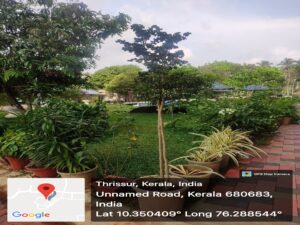

LIST OF ORNAMENTAL PLANTS IN SCAS
1 Adam
2 Bougainvillea
3 Chethi
4 Dahlia
5 Ground orchid
6 Horn Plant
7 Indoor Plants
8 Jamanthi
9 Kolambi
10 Mani Plant
11 Nandyarvattam
12 Red Palm
13 Rose
14 Snake Plant
15 Thiruhridaya
16 Thuja
The ornamental plants placed indoors provide a good and pleasant ambience and also purifies the air. There are many perfumes made using the fragrance of the flowers. Attractive looking flowers and plants can influence you psychologically and keeps you happy. You can achieve a calm mind and healthy body by indulging in ornamental plants gardening.
LEISURE PARK
Open atmosphere with water bodies will reduce the academic stress developed among the students which will well understand by SCAS management and they develop few natural open space in the college. This open ventilated space is useful foe open debate and fruitful discussion and developed an informal education among students.
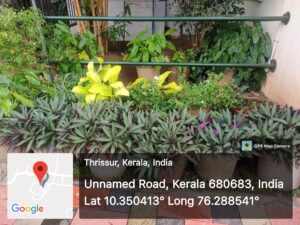

OXYGEN BENCH
Sahrdaya College developed nurtured and marinated a garden sitting bench in the front side of main building. This area is one of best place for relieving stress to the students by the free ventilation under the roof of tree.
VEGETABLE GARDEN
It is a garden that exists to grow vegetables and other plants useful for human consumption. Gardening can provide students with hands-on learning opportunities while increasing environmental awareness and vital experience in problem-solving. The school gardens are changing
the eating habits of the students Gardens are a wonderful way to use the college campus as a classroom, reconnect students with the
natural world and the true source of their food, and teach them valuable gardening and agriculture concepts and skills that integrate with several subjects, such as math, science, art, health and physical education, and social studies, as well as several educational goals, including personal and social responsibility. They gain self-confidence and a sense of “capableness” along with new skills and knowledge in food growing — soon-to-be-vital for the 21st century students become more fit and healthy as they spend more time active in the outdoors and start choosing healthy foods over junk food.
SILENT ZONE
Nowadays, silent zones are getting important in academic institutions. Noise pollution leads to stress and other medical and neurotic problems in children. Besides, creativity and knowledge absorption capacity is also going down. For reduction of academic stress level
there is palace for complete relaxation .This is the importance of silence zone. Sahrdaya College has aerated certain silent zones in the college itself. Natural silence zones are also crated in the college campus where there is no sound other than natural sound.

LIST OF TREES IN THE CAMPUS
Trees release oxygen when they use energy from sunlight to make glucose from carbon dioxide and water. Like all plants, trees also use oxygen when they split glucose back down to release energy to power their metabolisms. Averaged over a 24-hour period, they produce
more oxygen than they use up; otherwise there would be no net gain in growth. The college campus is divided into various locations for listing out the trees. The college campus contains 902 Plants in 97 various species. Most of the trees are Rubber, Mahagani, coconut , etc.
LIST OF TREES IN THE CAMPUS
1 Ambazham
2 Aranamaram
3 Arecanut
4 Ashokam
5 Atthi maram
6 Bamboo
7 Banana Plant
8 Bottle Palm
9 Carambola
10 chamba
11 Chembu Plant
12 Cherunarakam
13 Cheruteak
14 Coconut Tree
15 Divi
16 Eenthappana
17 Eetti maram
18 Elanji
19 Ficus
20 Ficus Palm
21 Gooseberry
22 Green Chilli
23 Guava Tree
24 Jackfruit Tree
25 kanikonna
26 Kanjiram
27 karithechi
28 Karpooram plant
29 Koonampala
30 Kudampuli
31 kumil
32 Lakshmi taru
33 Mahogany
34 Mandaram
35 Mango Tree
36 Mangosteen
37 Manimaruth
38 Mullatha
39 Neem
40 Neermaruthu
41 Nenthra vazha
42 Njaval
43 Noni
44 Papaya
45 Pathiri
46 Peraal
47 Pomegranate
48 Rambutan
49 Rubber
50 Seethapazham
51 Silver Palm
52 SiriFicus
53 Sweet Ambazham
54 Sweet Lubica
55 Thanni Baheda
56 Ung plant
57 Uruvanchi
58 Venga
59 Yellow Palm
Advantages of trees
1. Maintain the equilibrium of air and food: Humans and animals need food and oxygen and
excrete carbon dioxide and water. The plants, algae, etc, in the forest use carbon dioxide and
water and release or produce oxygen and food.
2. Filter and store water, and drastically reduce storm-water runoff: Forests filter and regulate
the flow of water. The litter over the forest floor acts as a sponge which filters, stores and
gradually releases the water to natural channels and ground water.
3. Conserve valuable topsoil and reduce soil erosion: A forest is like a protective green cloth
over Mother Earth’s fragile body.
4. Conserve biodiversity and balance ecology: In a natural environment, the populations of
species are balanced to an optimum minimum level
5. Reduce pollution: Plants can remove and/or Phyto remediate pollutants and contaminants
from soil and water.
6. Arrest or reverse global warming: Global warming can cause extinction of species, tropical
cyclones, extreme weather, tsunamis, abrupt climatic change, sea level rise, increased human
stress resulting in violence, etc. These are just a few of its catastrophic effects. Plants can lock
CO2 in their bodies to save our planet and the life on it.
7. Acoustics of the college will gave comfort zone for academic purpose. : Green coverage
around the building reduces the sound by absorption by leaves thus the echo and
reverberation of sound will come down.
PEDESTRIAN FRIENDLY PATHWAYS



PETS AND BIRDS
Animals play an important role in people’s lives. Many studies indicate that pets reduce anxiety and blood pressure. Findings suggest that the social support to a pet makes a person feel more relaxed and reduces stress. Pet help to develop great empathy, higher self-esteem, and increases participation in social and physical activities. This promotes students’ emotional development.
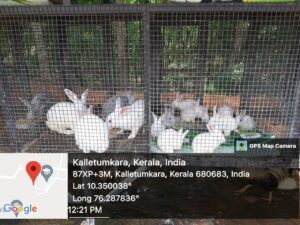
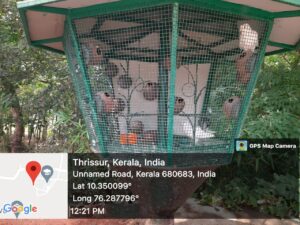
WATER RESOURCES AND CONSERVATION
The requirement of water for the college, canteen and gardening etc are met by supply from two big wells in the college boundary. The water is collected in one main tanks and it is located in main block. The water thus collected is supplied through gravity to other tanks of located in main building, hostels, canteen, etc. The water from wells are checked in an accredited laboratory in time to time to ensure its portability.

WATER RESOURCES
There are three wells in the college, one well is located near the chapel which is not use at present. Well located outside of campus is the main source of water for college and hostel Water from the main well which is located just outside of boundary wall is pumped into sand filter and
carbon filters and then UV treated stored in the 3KL 4 tanks in the main building.
WATER UTILITIES
The labs have the highest tap points whereas the toilet accounts for the major consumption.
RAIN WATER HARVESTING
The average rain fall in Thrissur for the last few years is 3000mm means 3lacs of liters of water from 1000Ft2 area of roof or as 1.2 Lacs liters of water from 1 cent land .The Sahrdaya College campus itself is 8 acres of land availing the average rain fall of 960 Lacs of litres of water . This is more than sufficient for meeting the water requirements. Sahrdaya College taken many initiatives for collecting th rain water and use of them and also recharging of ground water. Rainwater harvesting (RWH) is a technique of collection and storage of rainwater into natural reservoirs or tanks, or the infiltration of surface water into subsurface aquifers (before it is lost as surface runoff). One method of rainwater harvesting is rooftop harvesting. With rooftop harvesting, most any surface — tiles, metal sheets, plastics, but not grass or palm leaf can be used to intercept the flow of rainwater and provide a household with high-quality drinking water and year-round storage. Other uses include water for gardens, livestock, and irrigation, etc.
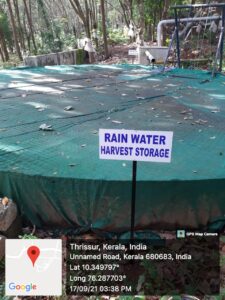
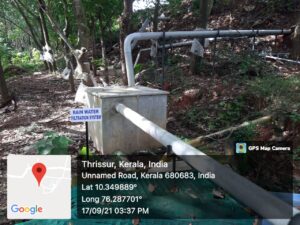
Rainwater harvesting for ground water recharge
Aim and Objectives:
- Conservation of rainwater for future use
- To use rainwater for gardening Activity: Conservation of rainwater in soil or in a container is
known as rainwater harvesting.
The rainwater from entire college campus and roof top of building is collected through PVC pipe s and feed into ground at four locations in the campus and details are given below table. These three natural sites are selected for rainwater harvesting, ground water recharge, and bore well recharge.
GREEN CAMPUS GREEN CAMPUS
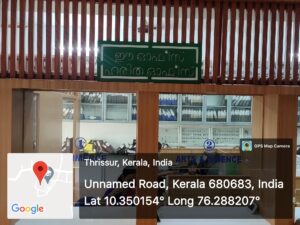

SAVE WATER SAVE EARTH

SAVE ELECTRICITY








